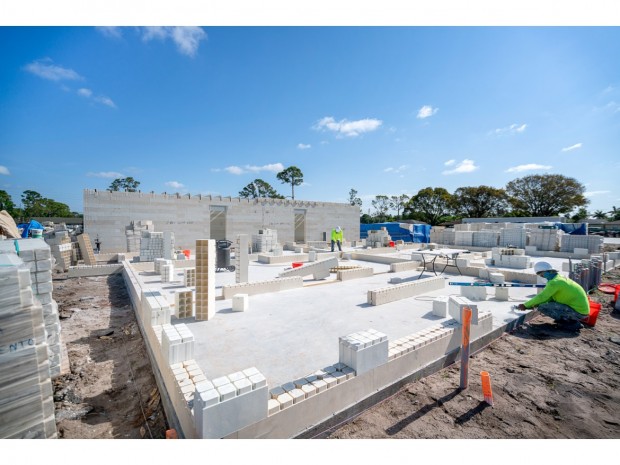Innovative Lego-like bricks of 90% recycled plastic are revolutionizing the construction industry by significantly reducing building time. These eco-friendly bricks are designed for easy assembly and erecting structures quickly and efficiently. They also require minimal equipment, making the construction process more straightforward and cost-effective.

(Photo : Building Enclosure/Lego Bricks )
Lego-Like Bricks
The Lego brick is composed of 'Plaex-crete,' a durable composite made of recycled plastic that is shredded, cleaned, and fed through a molding machine to generate a cement-like paste. In its most basic form, the completed product is this paste, with additional components such as colorants, UV inhibitors, and flame blocks for the remaining 10%. Compared to a conventional brick of the same size, the final block weighs 35 percent less.
Dustin Bowers, the creator of Plaex, is a carpenter by profession. Nevertheless, he became a father in 2017, and it was then that he became aware of the inefficiency of the construction sector. During that year, he experienced another epiphany while perusing a research paper regarding using plastic as a binder in concrete. PL-astic, Aggregate, and EX-truder were the names that were ultimately chosen for the startup.
Plastics, such as PETE, LDPE, PP, and HDPE but not PVC or PS, are obtained from Extended Producer Responsibility (EPR) partners, typically in the form of farm and agricultural refuse. After that, the waste is treated and compacted into LinX blocks, which are used for constructing walls and circular angling, as well as Brick&Panel blocks, which are used for wall construction.
Moreover, the company asserts that building a two-story house with only essential tools would take eleven to twelve days. This means it's intended for ambitious but inexperienced do-it-yourselfers or a completely different group of people, like our future humanoid computer bricklayers.
Accordingly, numerous businesses are commencing the delivery of robots with humanoids to warehouses and manufacturing facilities in your vicinity at this very moment. Automated systems and robots that work together are no longer considered science fiction.
On the other hand, a TikTok clip that demonstrates how Plaex blocks can withstand the force of a bulldozer has gained widespread attention and is currently trending on the internet. The video highlights the straightforward design, revealing that the construction process does not require any tools because the components link like Lego bricks. Furthermore, each brick weighs approximately five pounds and is three times more durable than conventional bricks.
Also Read: Technological Revolution in Building Industry Enhances Safety of Construction Workers
Repurposing Plastics Into A Building Material
Plastic disposal is a globally recognized issue evident in the deepest ocean trenches and the highest mountains. This material is practically indestructible when exposed to natural circumstances; nonetheless, it is dumped on a massive scale all over the world. As mentioned, about 359 million tons of plastic are produced annually worldwide. Their disposal cannot be addressed rapidly enough to prevent damage to living organisms by the environment. Yet, they can be recycled.
The construction industry is experiencing a surge in demand for recycled plastics, which are frequently created from dumped waste plastic. Plastic is more cost-effective and less destructive to the environment than traditional building materials, making it an attractive and viable choice.
Waste plastic, long regarded as a substantial environmental concern, is now discovering a new role in the building industry. Through recycling and reusing various types of waste plastic, the construction sector is making a significant contribution to reducing the negative impact of plastics on the environment.
Related Article: Lego-Type Brick's Potential to Replace Concrete and Cement







